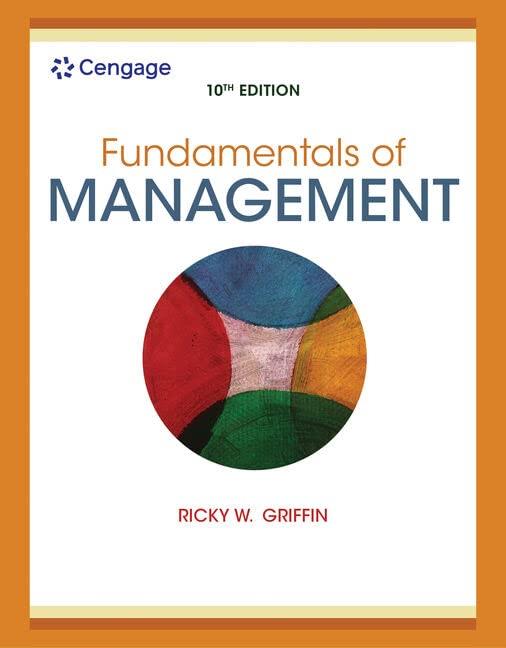Answered step by step
Verified Expert Solution
Question
1 Approved Answer
Review the case and discuss the questions below In what ways does size give them a unit cost advantage? In what ways does size give
Review the case and discuss the questions below
- In what ways does size give them a unit cost advantage?
- In what ways does size give them a unit revenue advantage?
- How does the global supply-chain crisis seem to favor large companies?
- Why is it currently easier for large companies to cope with the global supply-chain crisis than for small companies?
- Besides just coping, what are some of the tactics deployed by Procter & Gamble and IKEA?
- What kinds of strategic moves are they making?


Procter&Gamble Co. said that it expects solid sales and profit growth over the next nine months, even as costs for everything from warehouse space to raw materials rise faster than the consumer-products company expected. From furniture makers to grocers, the world's biggest companies are using their deep pockets, sprawling global operations and commanding market share to insulate themselves from the global supply-chain meltdown. They are also flexing their pricing power, taking advantage of consumers' willingness to pay up for higher-end products. P&G, maker of Tide detergent and Crest toothpaste, said Tuesday it will start charging more for razors and certain beauty and oral care products, price increases that come in addition to earlier moves to start charging more for staples from diapers to toilet paper. The company said its sales and profit goals for the year remain intact, as it has managed to keep products in stock. "To the consumer, it looks like we're in good supply," P&G Finance Chief Andre Schulten said in an interview. Other corporate giants are remaining relatively insulated from the global supply-chain crisis, with sales and profitability stable or growing even as their margins and, in some cases, share prices, take hits. U.S. inflation is at its highest level in a decade as price increases from pandemic-related labor and materials shortages ripple through the economy. IKEA, the world's largest furniture seller, said even though many of its products are absent from shelves as they sit idle at warehouses waiting for trucks, shortages weren't significantly affecting sales because the company has a big enough range of products to provide alternatives. Meantime, the company said, consumers' shift to online shopping provided a sales boost that more than makes up for any lost revenue. we want to hear from you How have price increases influenced your spending habits or plans? Share your experience in the form below. Grocer Albertsons Cos. said this week that sales rose nearly 5% for the three-month period ended Sept. 11, despite major gaps in supply. The company, the second-largest U.S. grocer, said it is offering alternatives to out-of-stock items and passing on price increases to consumers, who have so far been willing to pay more for staples. Albertsons Chief Executive Vivek Sankaran said Monday during a call with analysts that supply-chain challenges persist and that shoppers might not find exactly what they are looking for in stores. But the grocer is finding ways to supply its shelves and consumer demand remains strong, he said. P&G executives said the company's scale, ability to spend on supply-chain fixes and its flexible operations are enabling it to keep products in stock even as consumers increasingly encounter sparse shelves at stores. In China, for instance, P&G moved production to other factories when some provinces limited plants' power usage in recent weeks as part of a national effort to limit energy consumption. P&G said it also has started enlisting backup suppliers, changing shipping routes to get around bottlenecks, reformulating products and, in some cases, limiting how much any one retailer can buy at a time to avoid stockpiling. "We become a very attractive customer for our suppliers because of the size and momentum of our business," said Jon Moeller, P&G's operating chief, who is set to over as chief executive next month. Over the past decade, many of America's biggest corporations have downsized, streamlined and centralized their operations, which helped enable them to capitalize on pandemic challenges, said Michael Zimmerman, who leads the analytics practice for consulting firm Kearney's Americas region. "The big companies have gotten the message that they need to be agile as well as big," he said. "They are able to commit $10 million to book three ships, or they can book an entire plastics plant, or mobilize a team of engineers to solve new problems very quickly." P&G, which released quarterly financial results on Tuesday, said the moves, along with increased demand for its products, should help offset added costs. P&G dwarfs most of its consumer-products rivals, and has largely outperformed them in the pandemic. Its closest competitor is Unilever PLC, maker of Dove soap and Ben & Jerry's ice cream, with $45 billion in annual revenue last ProQuest PDF GENERATED BY PROQUEST.COM Page 3 of 5
Step by Step Solution
There are 3 Steps involved in it
Step: 1

Get Instant Access to Expert-Tailored Solutions
See step-by-step solutions with expert insights and AI powered tools for academic success
Step: 2

Step: 3

Ace Your Homework with AI
Get the answers you need in no time with our AI-driven, step-by-step assistance
Get Started


